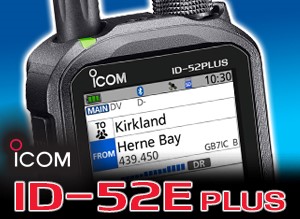End-fed wire antennas
While dipoles are very efficient antennas, they are not the only way to go. Some houses don’t really lend themselves to installing a half-wave dipole. If you only have one support an end-fed antenna may suit you better.
But be warned – end-fed antennas can be noisier and also cause more EMC/interference problems. However, they can be a cheap and easy way to get a multi-band antenna up for the HF bands, but you must usually use an Antenna Tuning Unit (ATU) or other matching device.
You must also have a good earth connection – not just the mains earth that the rig or power supply uses.
This might consist of a single copper earth stake, connected to the radio and/or ATU with thick earth cabling (keep it as short as possible). You can also add perhaps four or more wire radials at least a quarter wave long at the lowest frequency of operation, running out from the earth stake along the ground in different directions. These can be buried – the exact length of the radials is not critical, but more, shorter radials are better than fewer, longer ones.
But what length should my end-fed wire be?
Traditionally, many books may suggest that your end-fed wire should be a quarter wave long at the desired operating frequency. This would present a low impedance at the radio, enabling you to match it easier, but this isn’t really ideal.
The current maximum (which creates most of the electromagnetic radiation) would then be right next to the radio – causing lots of interference and other RF problems, such as “hot microphones” that could give you an RF burn and USB computer mice that fail to work.
It will also be tricky to match the antenna on other bands, particularly where the antenna is a half-wave long at your operating frequency and presents a high impedance at the feed point.
One solution is to choose a length of wire that offers neither a particularly high or low impedance on any of the bands you wish to operate on.
One such antenna is the W3EDP end fed. It consists of an 85ft wire fed against a 17ft counterpoise (attached to the earth point on the ATU). Some books say that you don’t use the counterpoise at all on 10m. Others say that you can use a 6.5ft counterpoise on 20m. You do need an ATU though.
The wire could go out the shack window, over the house and down the garden – it will all depend upon your garden’s layout.
You can also feed the antenna remotely through an unun (either a 4:1 or 9:1 unbalanced-unbalanced transformer). This allows you to position the unun away from the house and then feed the antenna with coax. The benefit is that the radiating element is away from the shack and less likely to cause EMC problems. You may also cut down on interference from computers and other devices in the shack.
You will get losses by using coax with an antenna that is presenting a higher SWR than is desirable, but as long as the coax isn’t too long it shouldn’t be too bad.
The W3EDP antenna works well on 80m and 40m and gives a similar performance to a dipole on 20m. On the bands above 20m it will work, but the performance may be down on what you could expect from a half-wave dipole cut for each particular band.
If you do get RF problems in the shack make sure you have a good earth (see earlier). If you still have problems attaching a quarter wave of wire (at the frequency you are getting problems and allowing for the velocity ratio if PVC-coated) to the back of the ATU will usually sort them out. For example, if you are getting RF problems on 20m (14MHz), a PVC-coated wire or counterpoise cut to a length of 5m may resolve many of the EMC issues.
The W3EDP end-fed antenna is a cheap way of getting multi-band operation, especially if you are a newcomer and restricted to 10W.
Other pages in this section – Antennas:










